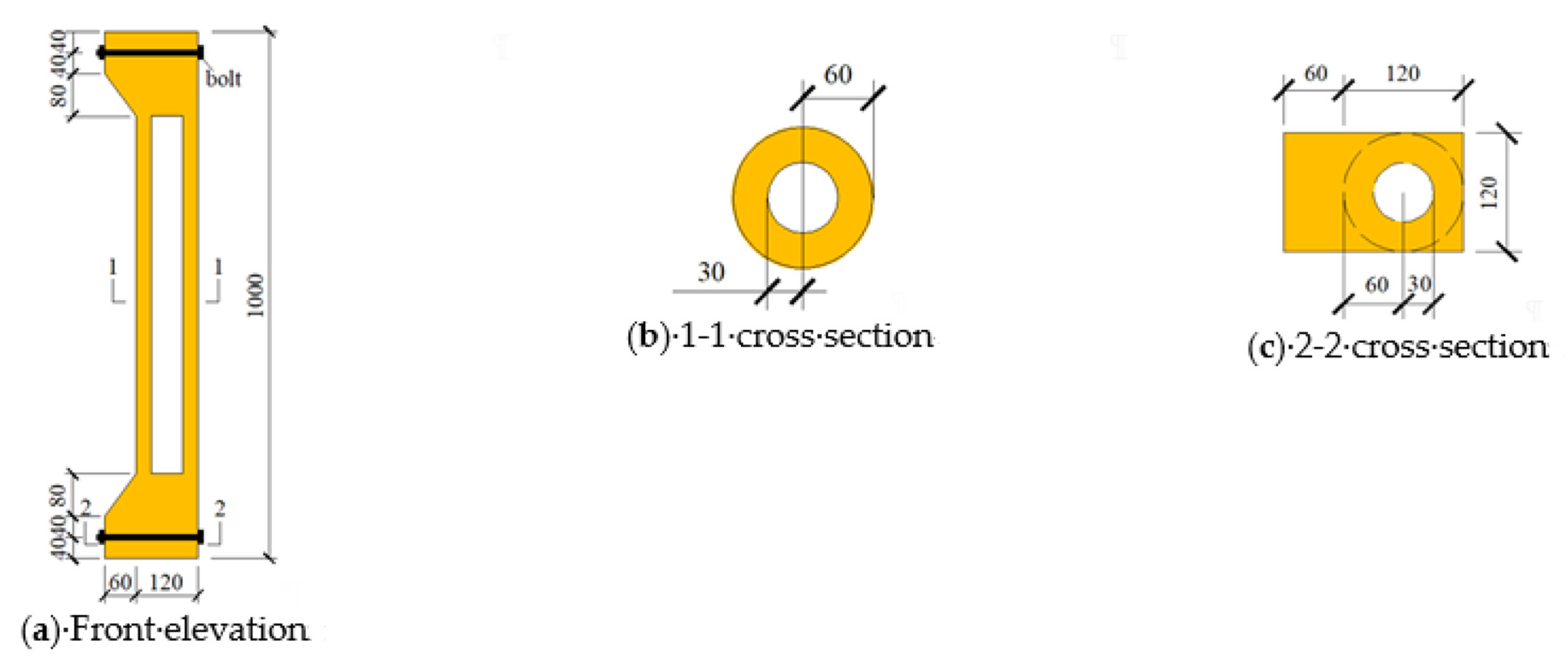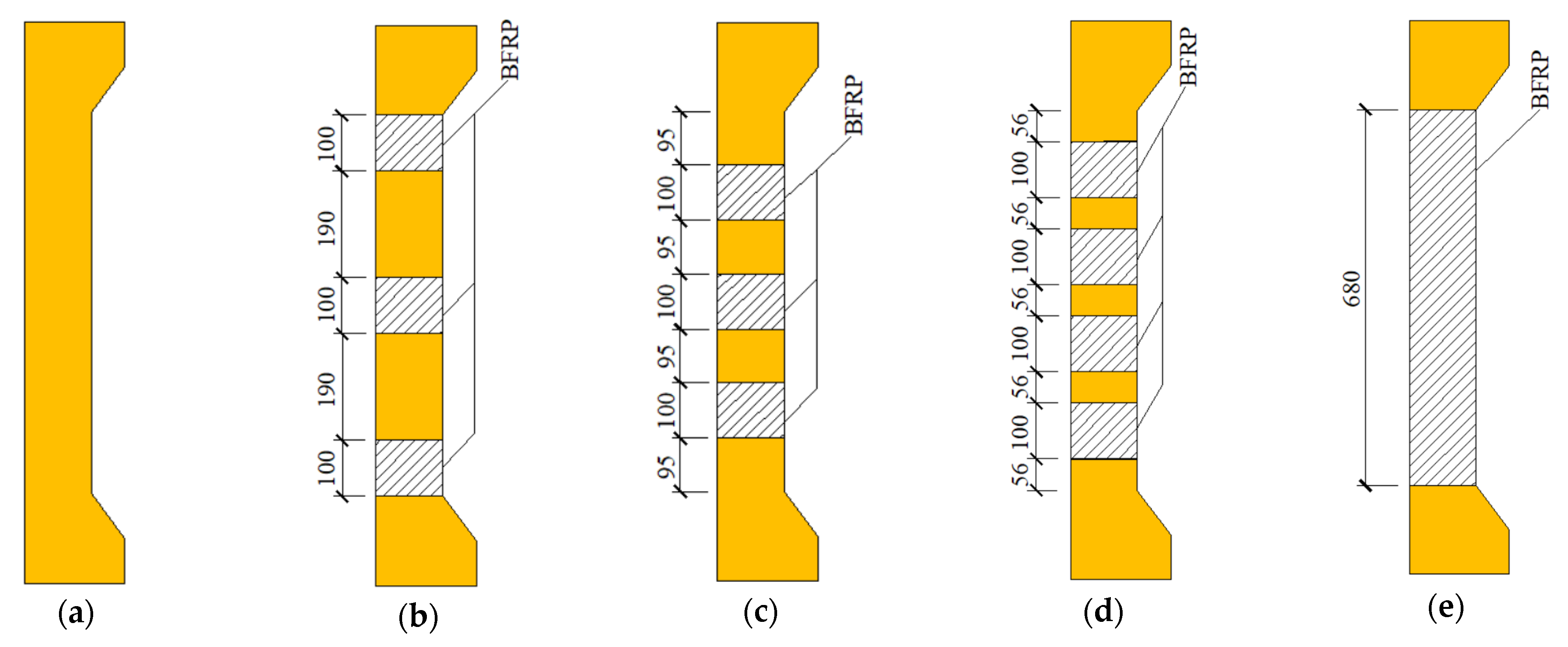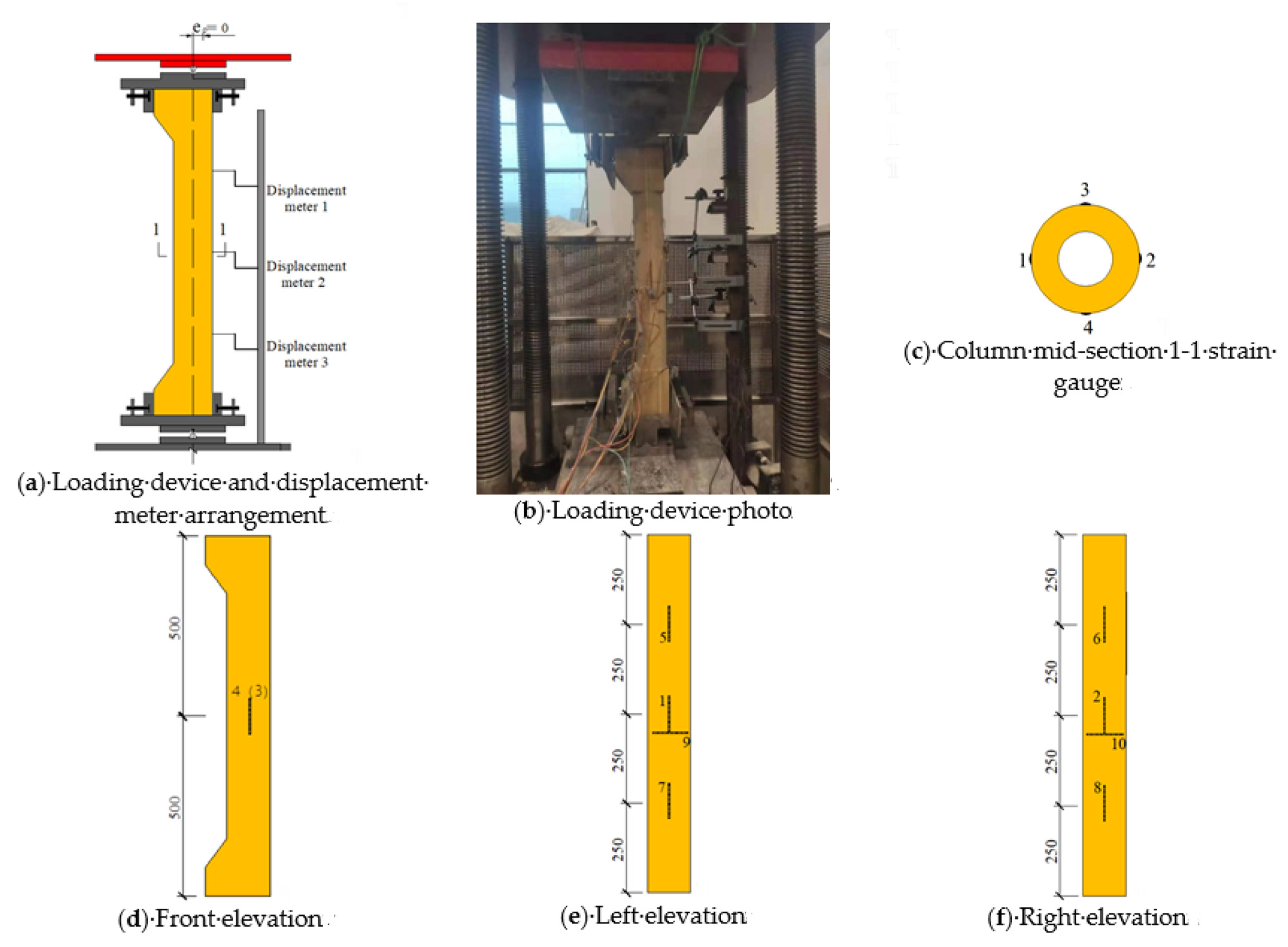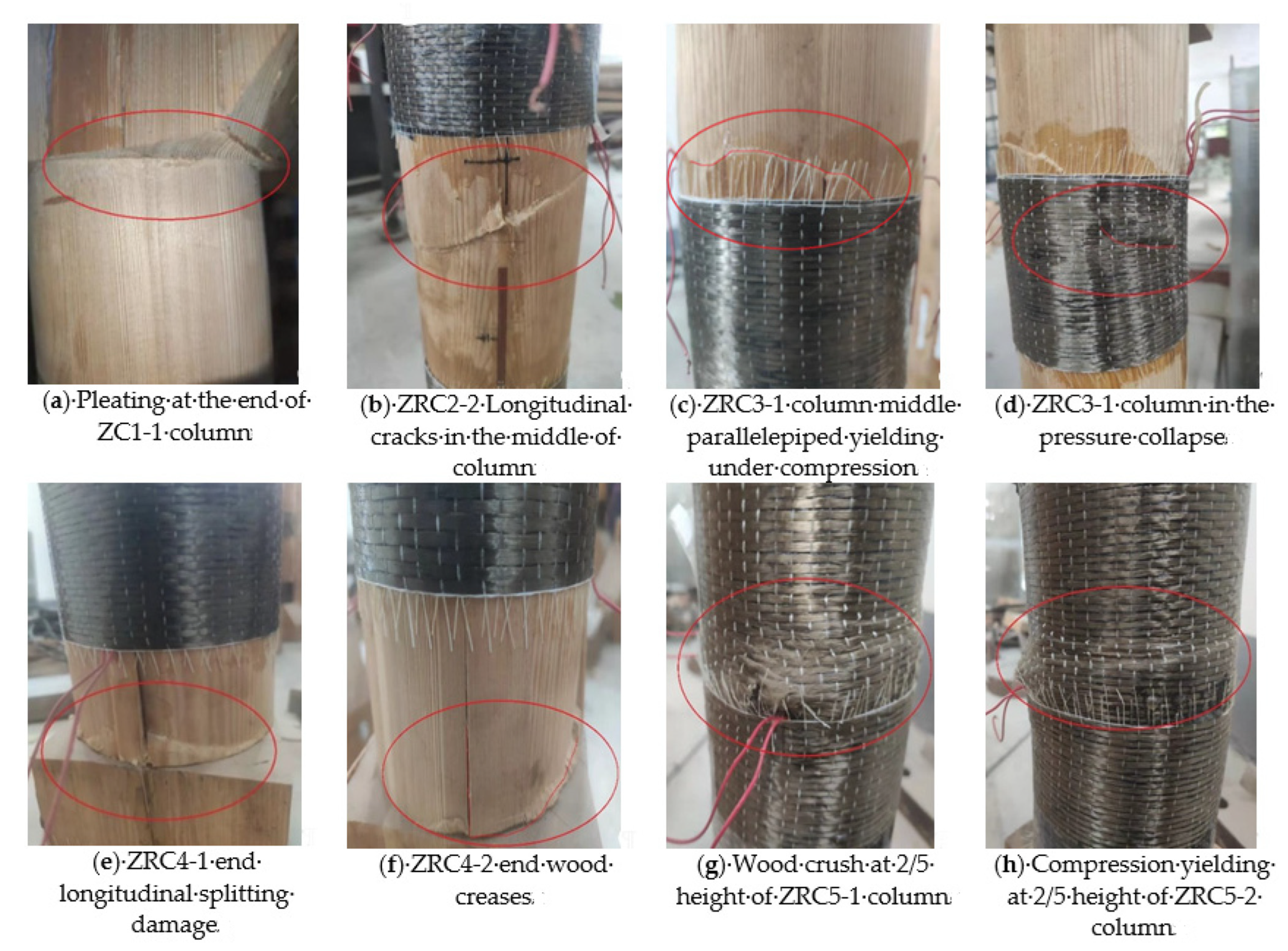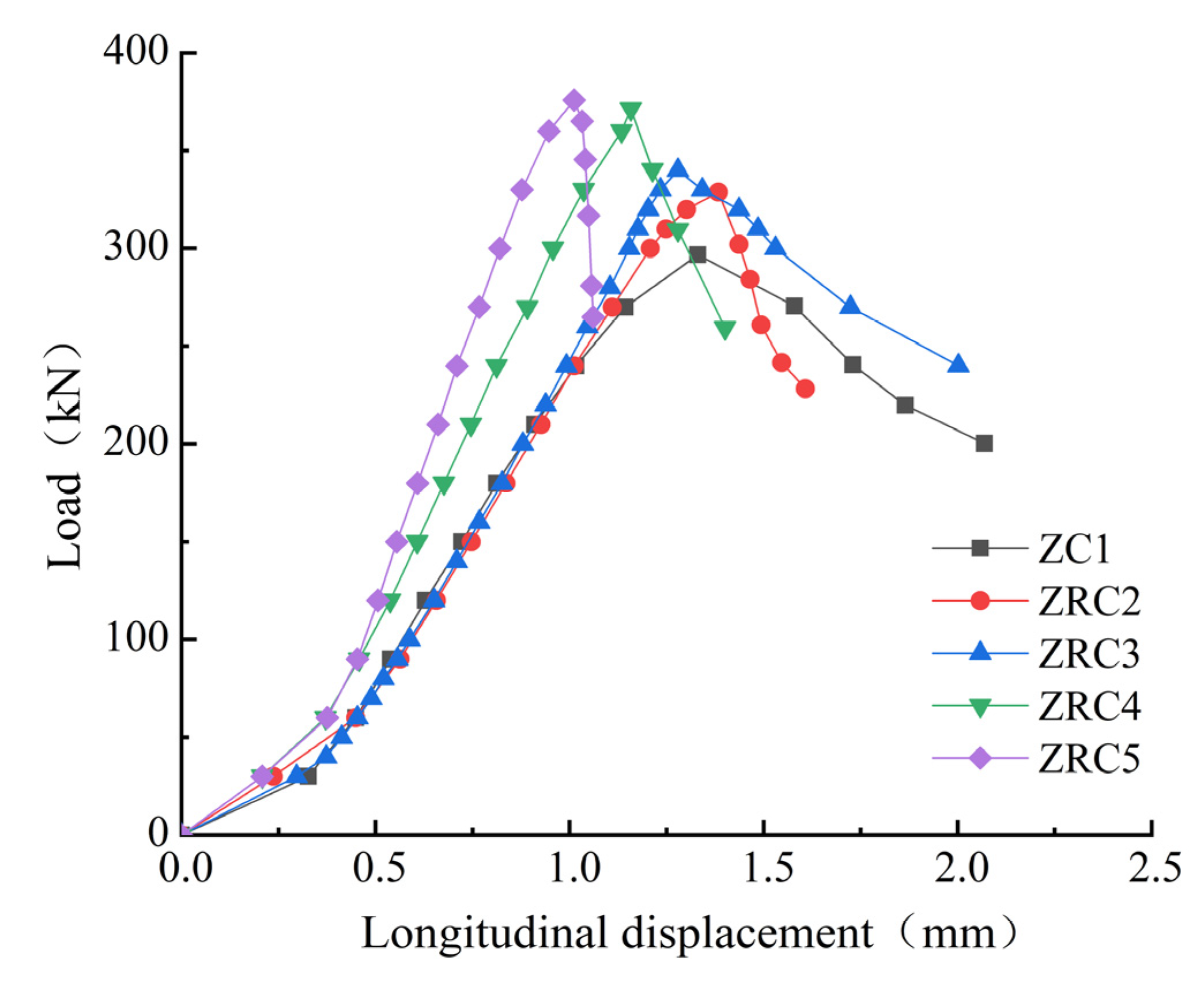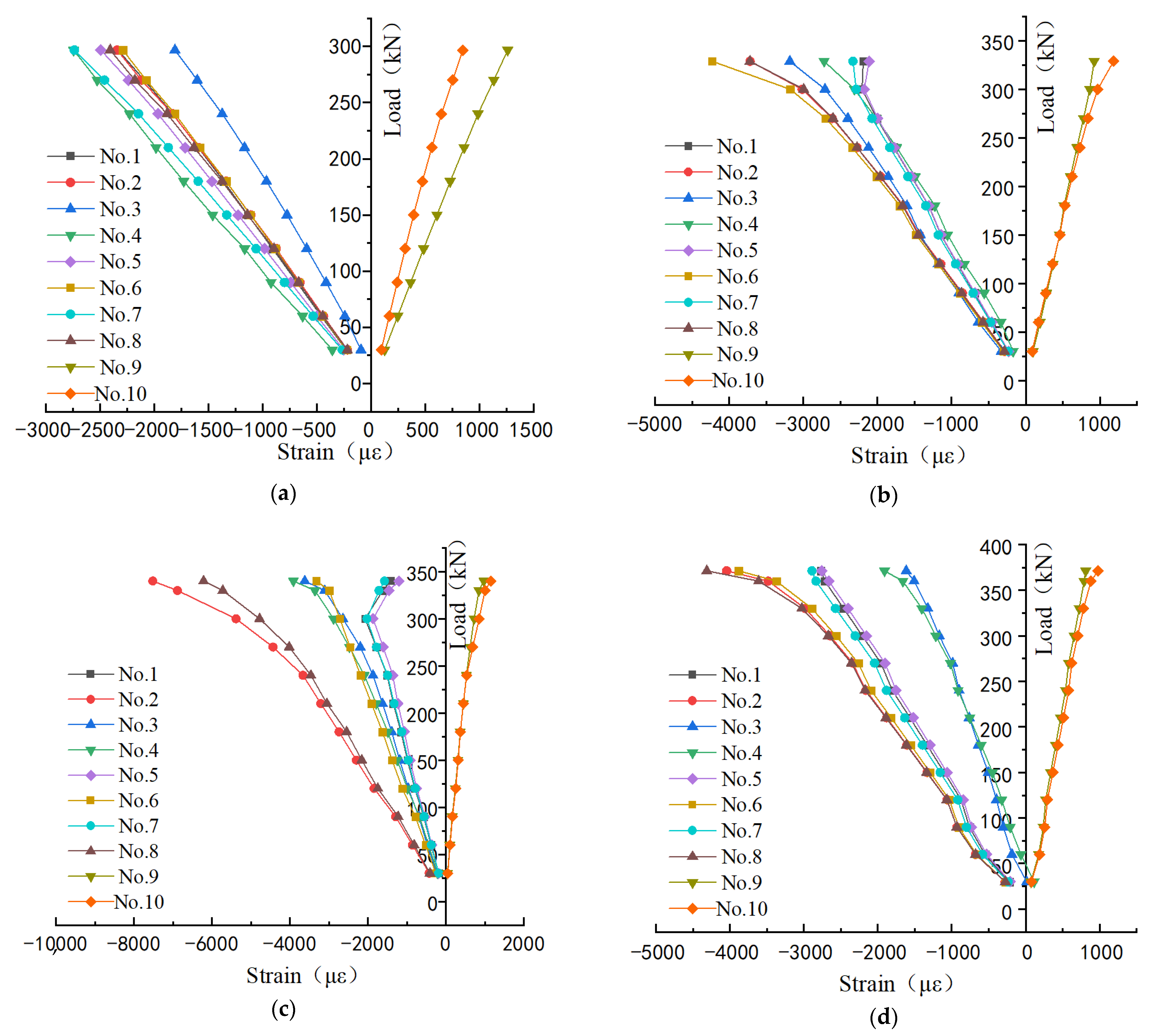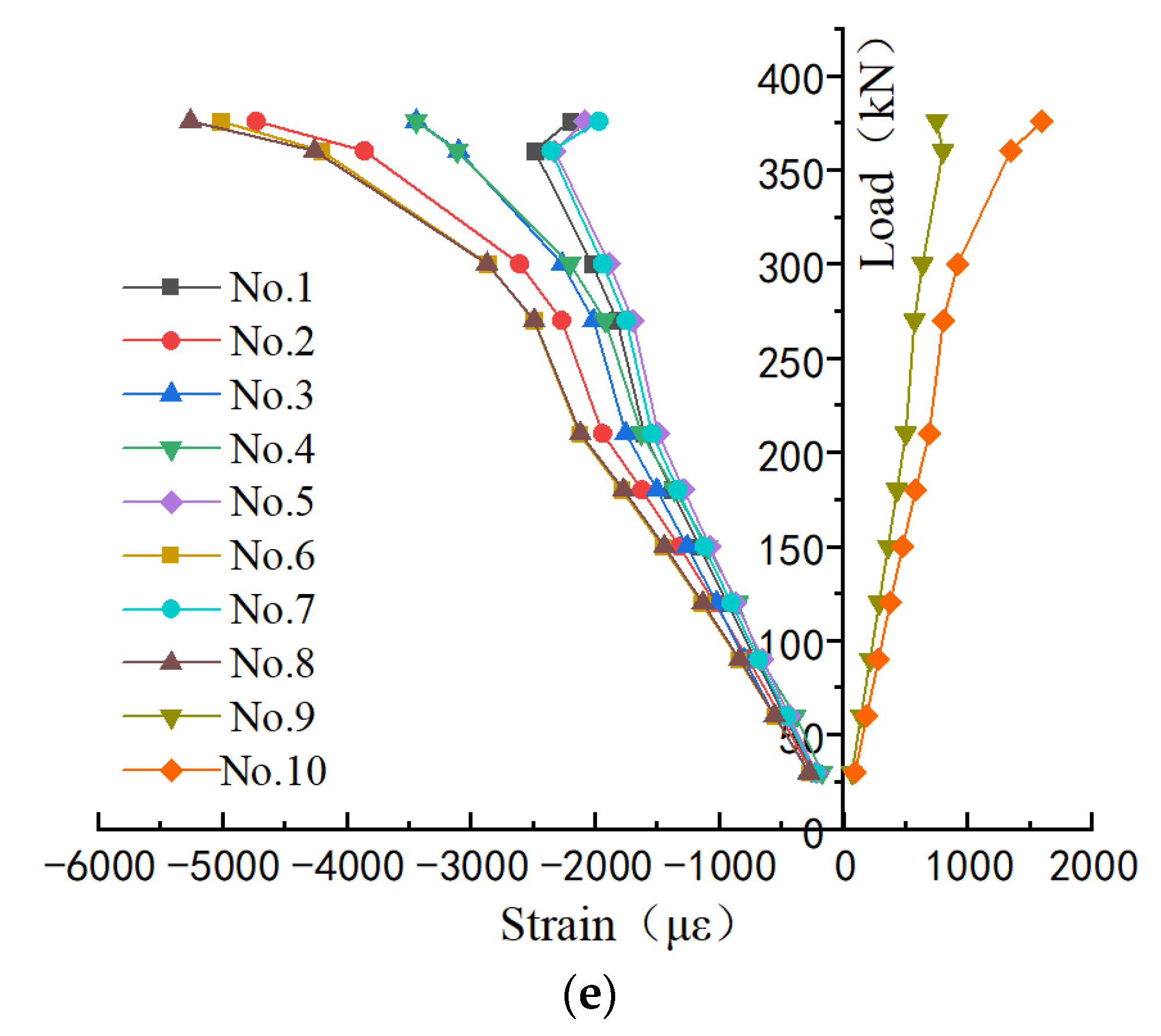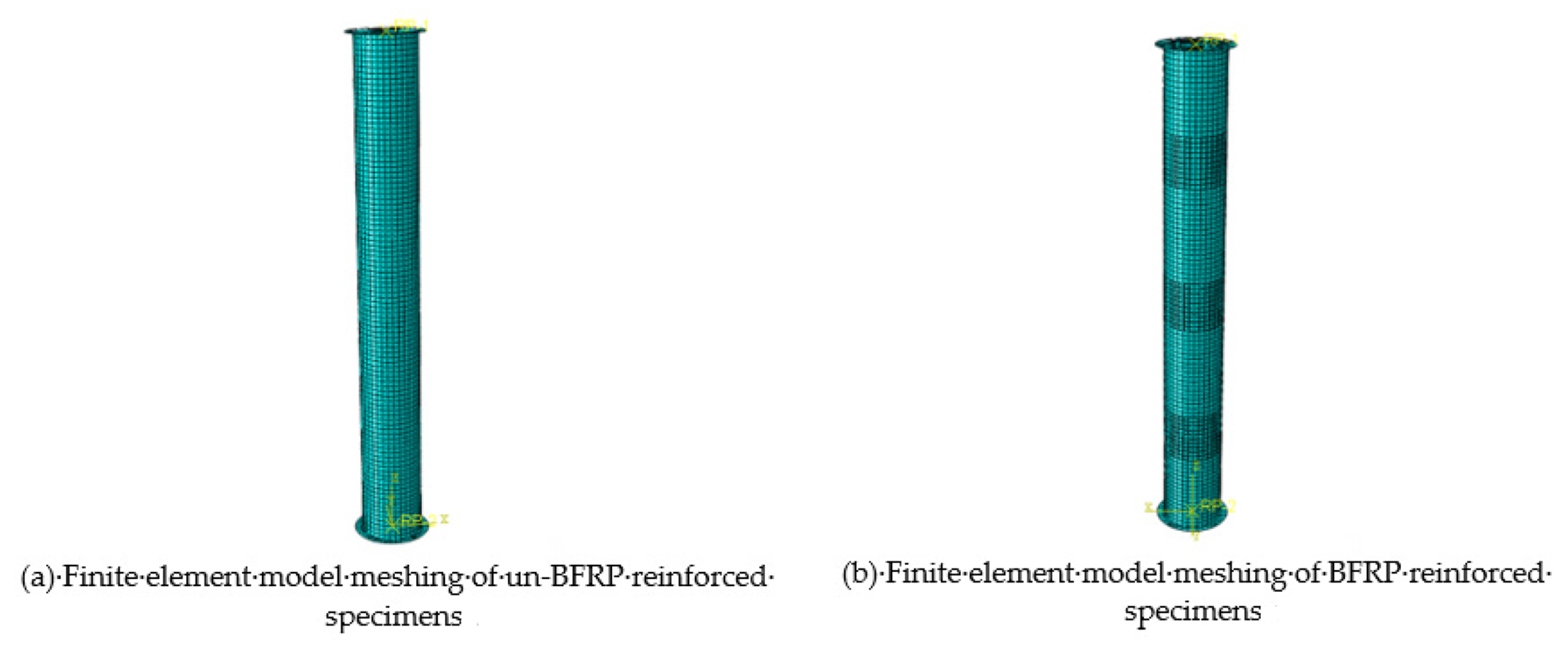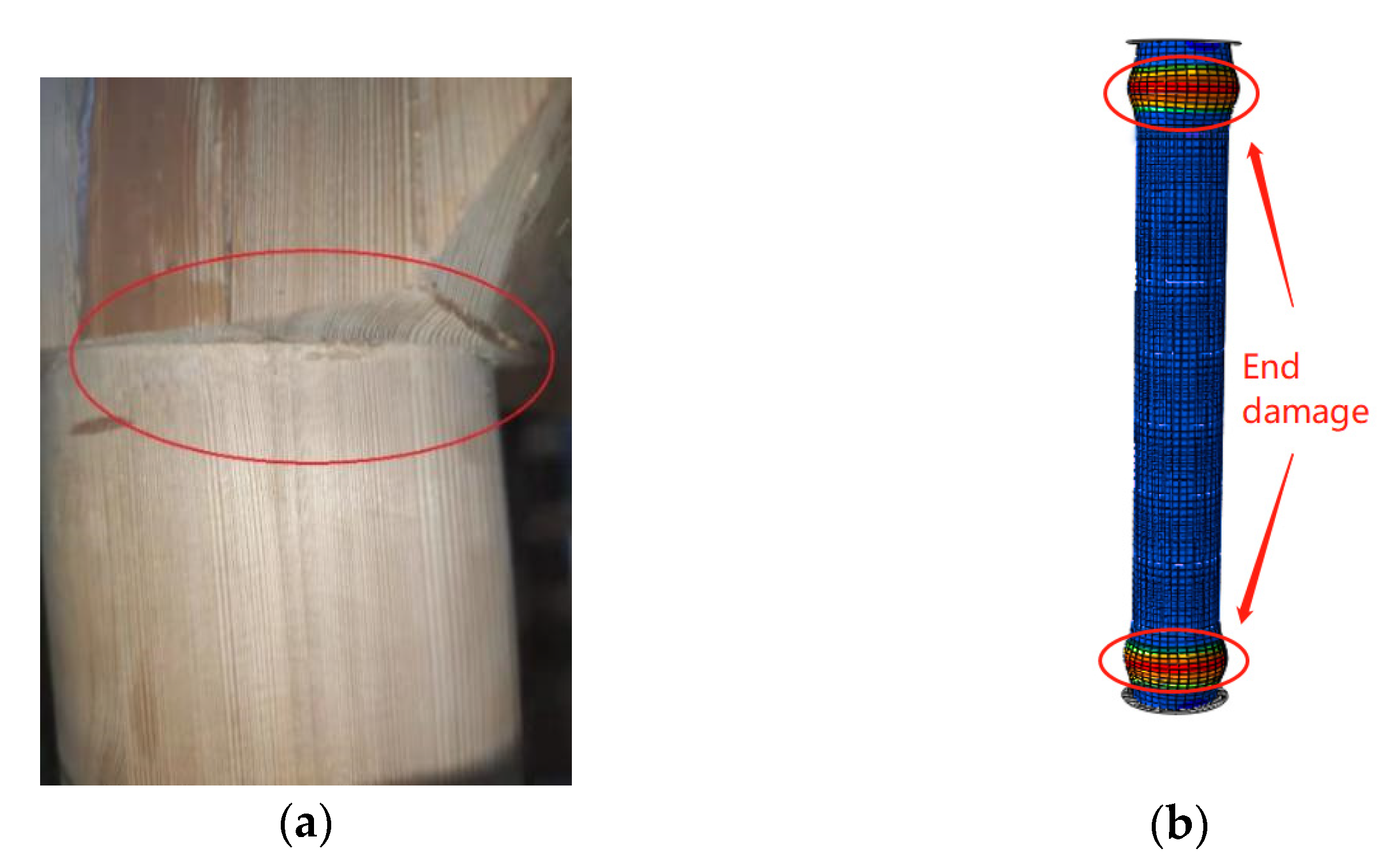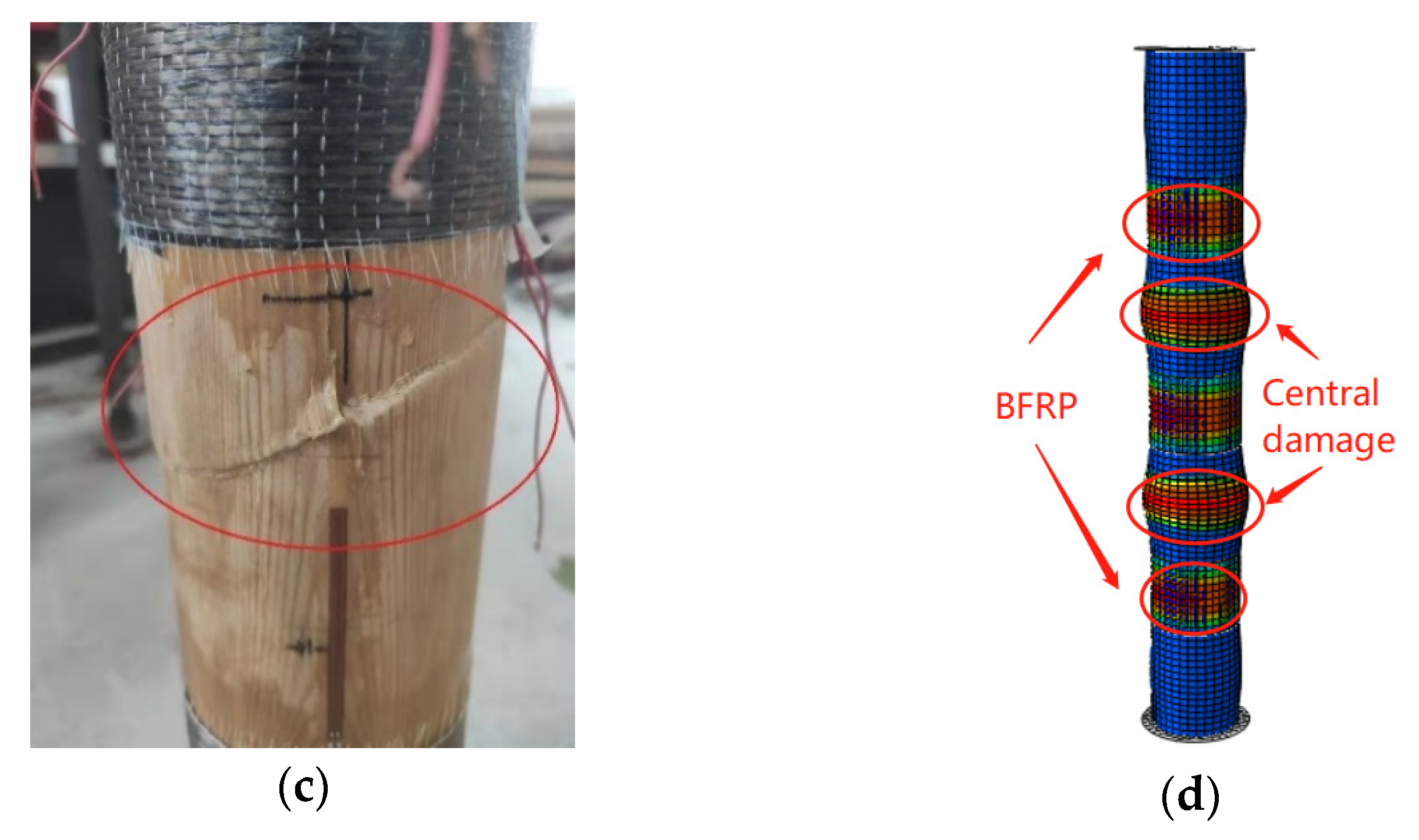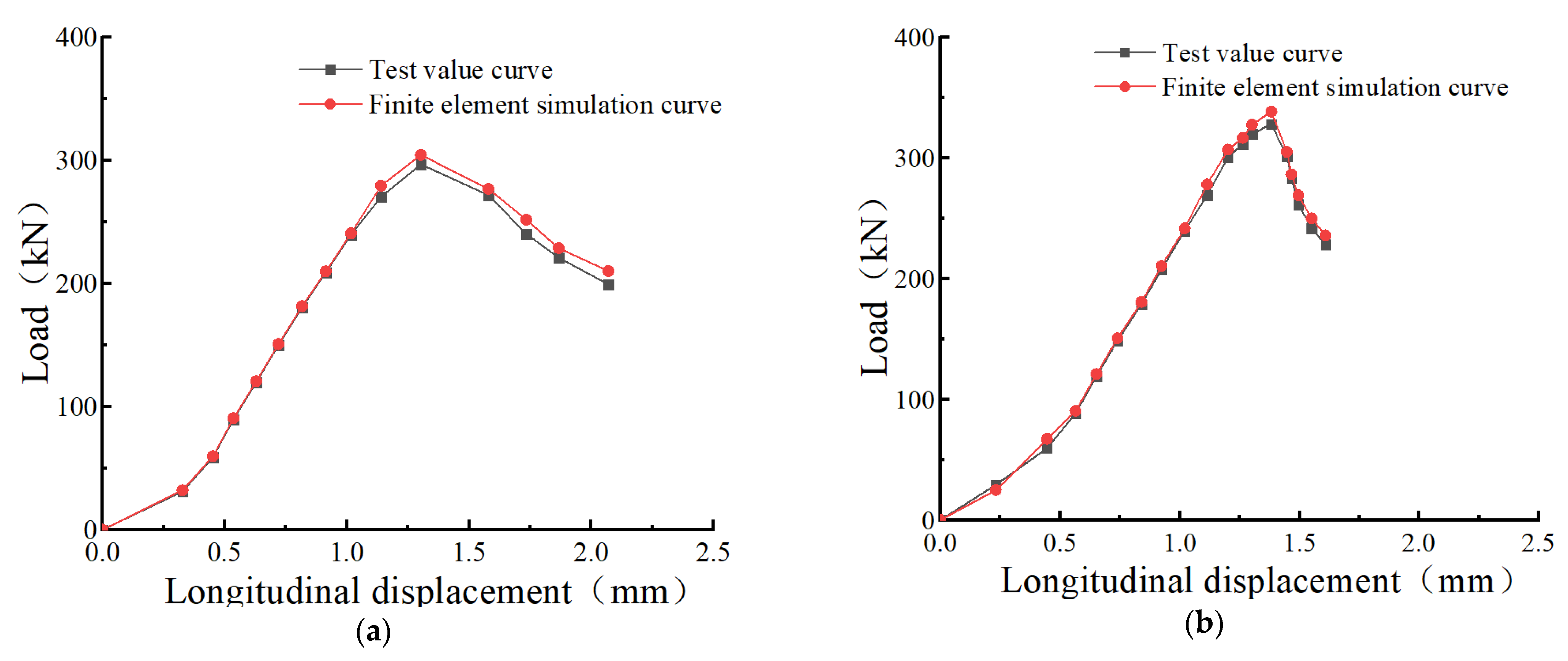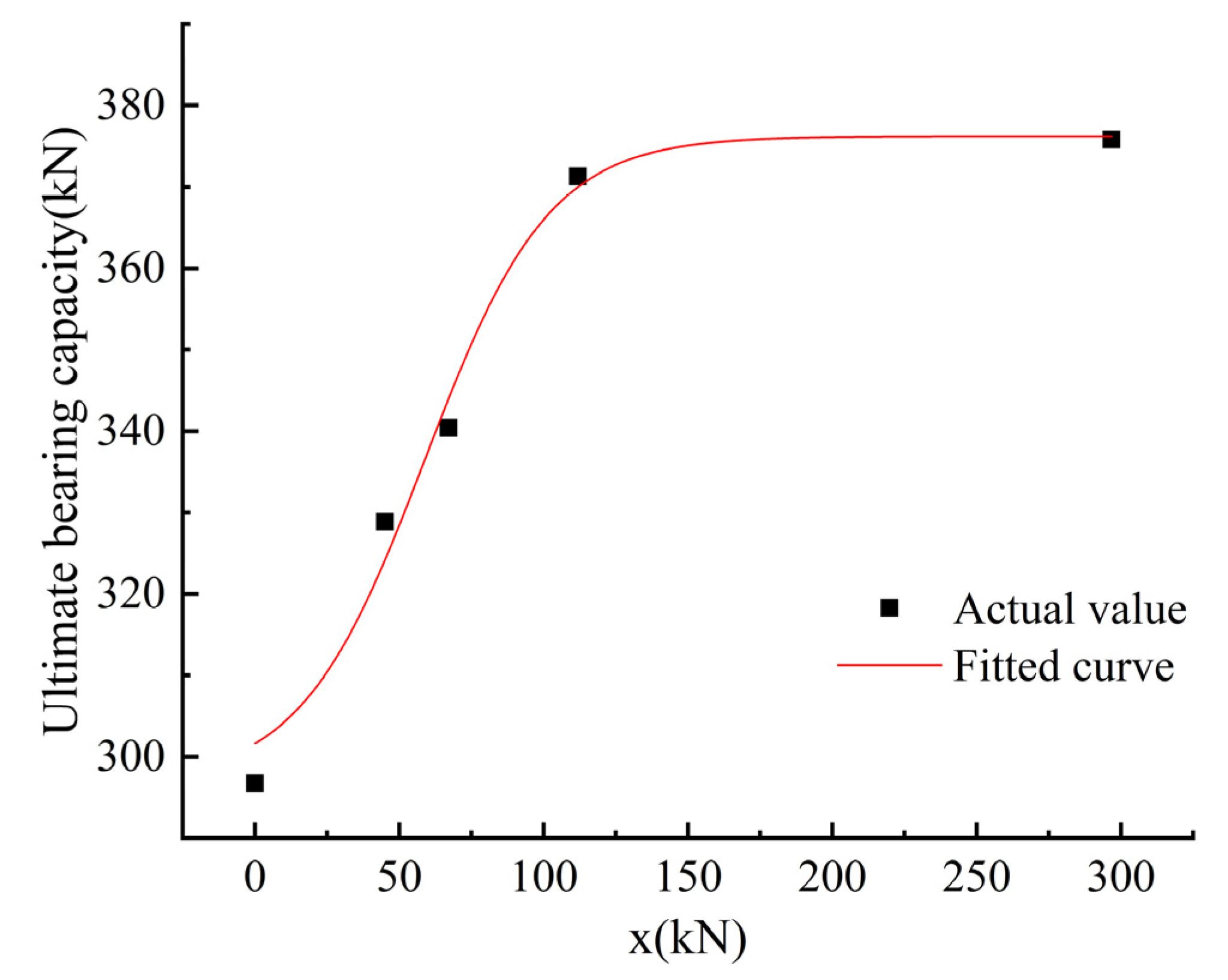In recent years, the awareness of green development, energy saving, and emission reduction has gradually become popular in the construction field [
1,
2,
3]; in this context, wood is widely used in the construction industry because of the advantages of being lightweight, renewable, and environmental protective [
4,
5,
6] compared with traditional construction materials [
7]. China is a large country with abundant wood resources and has built many famous wooden structures since ancient times, such as the Forbidden City in Beijing and the Wujiao Pavilion in Suzhou [
8,
9]. However, pure wood in wood structures has many natural disadvantages compared with glued wood, such as more knots and the tendency to corrode in humid environments. Therefore, with the passage of time, studies have shown how to strengthen the structural elements of buildings with strengthening and restoration methods [
10,
11], enhance the strength and stiffness of wood structures [
12,
13,
14,
15,
16,
17], and extend the life of wood buildings without damaging the main structure of wood buildings, thus guaranteeing the normal stresses of existing wood buildings.
At present, many scholars in China and abroad have conducted research on different types of columns and how to strengthen them, and some progress has been made. For example, some scholars [
18,
19,
20] studied the mechanical properties of concrete columns reinforced with basalt fabric fiber reinforced polymer (BFRP). The results showed that the compressive load capacity was significantly higher compared with unreinforced columns, as follows: the peak load and ductility of BFRP-reinforced concrete columns were increased by 5% to 62% and 160.0% to 415.2%, respectively. However, they did not study the compressive performance of BFRP-reinforced wood columns; therefore, it is worth noting that, with the increasing demand of society for sustainable and green building structures, the study of the compressive properties of BFRP-reinforced wooden columns becomes increasingly important, as wood is a better, environmentally friendly material. Some scholars [
21,
22,
23] conducted compression tests on pure wood columns. The tests showed that the pure wood column structure has better axial compression performance, which is revealed by the fact that the down-grain compressive strength of wood compared with the down-grain tensile strength and down-grain shear strength increased by 203.92% to 350% and 462.5 to 868.75%, respectively. However, pure wood columns are less used in wood frame buildings because of many drawbacks, such as more wood knots and unstable forces, and more glued wood column structures are used. Some scholars conducted [
24,
25] compression tests on prefabricated glulam wood columns reinforced with glass-fiber-reinforced polymer (GFRP) or carbon-fiber-reinforced polymer (CFRP), but they did not use BFRP for glulam wood reinforcement. However, it is worth noting that BFRP has better tensile strength and other mechanical properties compared with GFRP and CFRP [
26,
27,
28,
29]; specifically, the tensile strength of BFRP is 31.57% and 8.57% higher than that of GFRP and CFRP, respectively, which can strengthen the wood column structure in practical glue-laminated wood column-reinforcement applications. However, there are few studies on BFRP-reinforced glued wood columns. Wang Jinghui [
30] conducted experimental investigations and analyses on the compression performance of columns reinforced by BFRP and studied the effect of different BFRP arrangement parameters (number of BFRP layers, BFRP width) on the axial compression performance of glued laminated wood columns. It was found that different BFRP arrangement parameters had different improvement rates on the axial compression bearing capacity of glued laminated wood, among which, changing the number of BFRP layers contributed the most to the improvement rate of the axial compression bearing capacity of glued laminated wood, and the axial compression bearing capacity specifically increased by 21.37%; changing the BFRP width on the axial compression bearing capacity of glued laminated wood only increased it by 11.68%. It should be noted that they did not study the effect of different spacings of BFRP on the axial compression performance of glued laminated wood and did not provide a single parameter to control the BFRP arrangement scheme with different spacing. Some scholars [
31,
32,
33] conducted axial compression tests on BFRP-reinforced glued laminated wood solid or square hollow cylinders. It was found that the axial compression load capacity did not decrease linearly with the reduction in wood consumption; specifically, the wood consumption of square hollow columns was reduced by 14% to 26% compared with solid columns, but the axial compression load capacity of square hollow columns was only reduced by 3.26% to 7.81% compared with solid columns, indicating that the axial compression load of the glued laminated wood columns with hollow sections did not decrease linearly with the lessened wood consumption. However, the hollow cross-sectional shape of BFRP-reinforced glued laminated wood cylinders in practical engineering applications is mostly circular. Some scholars conducted bias pressure tests on BFRP-reinforced glued laminated wood columns. It was found that the bearing capacity of BFRP-reinforced glued laminated wood columns was significantly improved, specifically, by 6.35% to 18.19%. It is worth noting that they did not study the axial compression performance of glued laminated wood columns under BFRP reinforcement, but there are still more axially compressed glued laminated wood column structures under BFRP reinforcement in practical engineering applications. In view of the shortcomings of the above researchers, we have found that the axial compressive mechanical properties of glued wood hollow columns reinforced by basalt fiber reinforced polymer (BFRP) have not been studied, and the research in the field of the axial compression mechanical properties of glued wood hollow columns with different BFRP spacing arrangements is lacking. However, basalt fiber reinforced rolymer (BFRP), as a new concept of FRP and composite fiber materials, is an ideal material for strengthening and repairing ancient buildings and timber structures in practical applications. Therefore, in order to promote the application of BFRP in glulam hollow cylinder structures, the mechanical properties of glued wood hollow cylinders with different BFRP distance arrangements under axial compression are investigated. An effective BFRP total area is given in this paper so that—when the same volume of glued wood hollow cylinders is strengthened with BFRP in practical engineering applications—there is a convenient way to select the best BFRP arrangement scheme among BFRP spacing schemes according to the most effective BFRP total area in numerous applications, i.e., the single variable of the total BFRP area is used to control the number and spacing of BFRP arrangements. In order to solve the problem of how to determine the total area of effective BFRP for the volume of glulam hollow cylinders different from those in this paper, this paper proposes the concept of BFRP area ratio, that is, the ratio of the total area of BFRP to the area covered by the column body. By keeping the cross-section and volume of the glulam hollow cylinder unchanged, the effective BFRP total area of a glulam hollow cylinder with a known volume and the total surface area of the wood column can be scaled to determine the effective BFRP total area of glulam hollow cylinders in practical engineering. This study provides a technical reference and theoretical basis for strengthening and restoring the wooden structures of timber-frame buildings or ancient buildings with different spacing arrangements of BFRP.
